Many thanks to SWLing Post contributor, Chris Freitas, who writes:
“I am thinking of the new RSP1A SDR. Would you know of a good indoor antenna that would work well with it?”
Your antenna question is simple, but the answer is complex!
First off, I think the RSP1A is a great choice as it’ll give you proper exposure to the world of SDR (1 kHz to 2 GHz!) at a modest price.
Unlike a portable radio of course, your SDR must be connected to a PC, laptop, tablet or some sort of mini computer like Raspberry Pi. This limits your ability to easily try different antenna locations within your home compared to, say, a battery-powered portable radio. It might take some dedicated experimentation and patience.
Indoor antennas are so vulnerable to the radio noise within your home.
If you live in an off-grid cabin with no radio interference nearby, even a simple $1 random wire antenna hooked up to RSP1A’s SMA connector would yield results. I occasionally spend my summers in an off-grid cabin and it’s simply amazing what you can do with a modest setup when there are no man-made radio noises around.
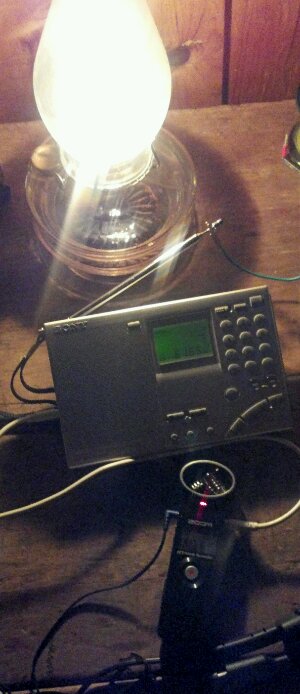
Listening to the final broadcast of Radio Netherlands in an off-grid cabin on Prince Edward Island in 2012.
But how many radio enthusiasts live in an off-grid cabin? Answer: very, very few! Most of us only get to experience off-grid life during natural disasters when the electrical grid has been damaged in our neighborhoods.
The reality of indoor antennas
You’ve told me previously that you live in an apartment in an urban setting, hence you probably cope with a lot of RFI.
When an antenna is indoors, it is forced to function within this RFI-dense environment. Your telescoping whip or wire antenna doesn’t discern between radio noise and your target broadcast signal. Thus, noise can overwhelm your receiver, essentially deafening it to all but the strongest shortwave broadcasters.
And simple, inexpensive portable amplified shortwave antennas? I’ve expressed my opinions about them before. They amplify the RFI as effectively as they do broadcasters.
This is why if you had a means to put a small random wire antenna outside–even if it was simply draped outside a window–it would likely perform better than an indoor antenna. I’m guessing this isn’t an option for you, Chris.
Think loops
Magnetic loop antennas are a popular topic here on the SWLing Post for a reason: they’re one of the best frontline tools for fighting urban noise. (Here’s a great tutorial/presentation [PDF] describing how mag loop antennas work.)
While you can build an amplified mag loop antenna (like our buddy, TomL) it’s not a simple project. Passive single turn loop antennas, on the other hand, are quite easy to build but are narrow in bandwidth (here’s a very cheap, simple passive loop project). You would likely design a single passive loop to serve you on a specific brodcast band and would have to retune it as you make frequency changes. You could build a passive loop antenna for less than ten dollars if you can find a good variable capacitor. Here’s another tutorial.
Commercially produced amplified wideband magnetic loop antennas are not cheap, but they are effective. If you’re a serious SWL, a good mag loop antenna is worth the investment.
Here are a few of my favorites starting with the most portable:
PK Loops
The most affordable and portable mag loop antenna I own is the PK Loop. I have the more compact PK Loop C-LOOP-HDSW6-18 (6 – 8 MHz), but Guy Atkins also touts the slightly larger Ham Loop which he finds tunes beyond the advertised 3.5 – 14.5 MHz range.
PK Loops are not as broad in bandwidth as the other antennas I mention below. You will have to retune the loop with any band changes and sometimes even within a specific meter band.
Click here to check out PK Loop offerings on eBay.
W6LVP Loops
To my knowledge, the W6LVP is one of the most affordable larger diameter amplified wideband mag loop antennas. We’ve published positive reviews of this antenna in the past.
W6LVP sells two versions of the antenna–since you’re not operating a transmitter, this $250 model would be all you need. indeed, if I were in your shoes, this would likely be the loop I purchase–very cost effective.
Wellbrook Loops
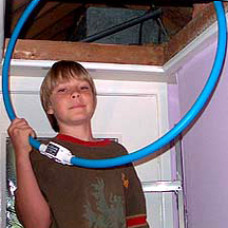 Wellbrook antennas are the staple magnetic loop antenna for many DXers.
Wellbrook antennas are the staple magnetic loop antenna for many DXers.
Wellbrook loops are manufactured in the UK and have been on the market for a very long time. Their re-engineered Active Inoor Loop Antenna LA5030 would serve you well. At £240.00 (roughly $330 US) plus shipping, it’s one of the most affordable in the Wellbrook line, but over a $250 budget.
Wellbrook makes a number of loops, but since you have no plans to mount this outside, I believe their indoor model would suffice.
Other loop options
There’s no shortage of magnetic loop antennas on the market, but most are pricer than the models I mention above and I know you have a tight budget. Here’s are some models we’ve mentioned on the SWLing Post in the past:
I have the RF Pro-1B and am very impressed, but it’s overkiil for your application (and twice the price of the W6LVP loop).
Fighting urban noise
Even if you build or purchase a magnetic loop antenna, you still need to eliminate as much RFI as you can on your own.
A couple years ago, our friend London Shortwave wrote a brilliant guest post about fighting urban noise. Read through his piece and try to implement as much of his advice as you can.
I hope this helps, Chris! This post is by no means comprehensive, so I hope others will chime in and comment with their experiences. Good luck fighting urban noise and I hope you enjoy your journey into the world of the SDR!

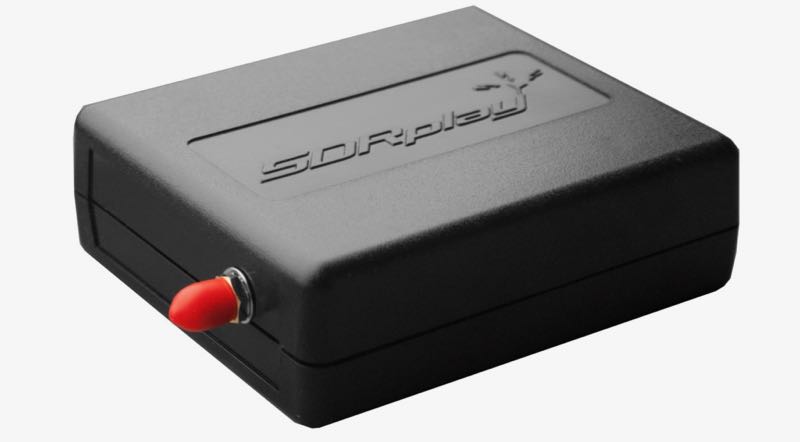
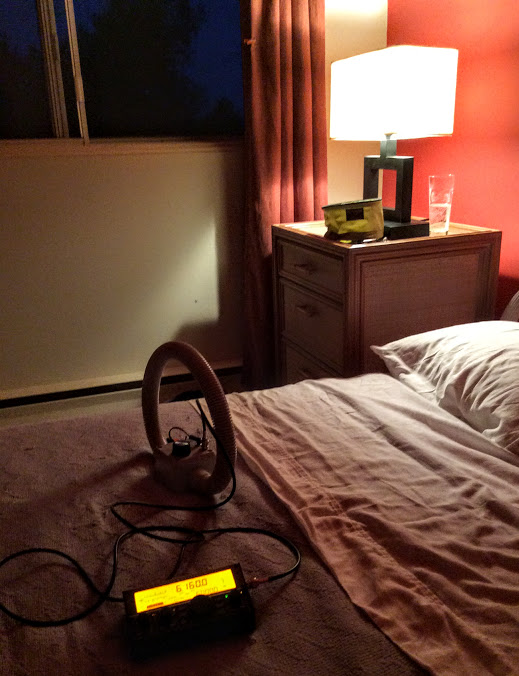
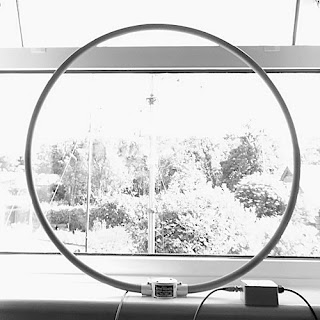
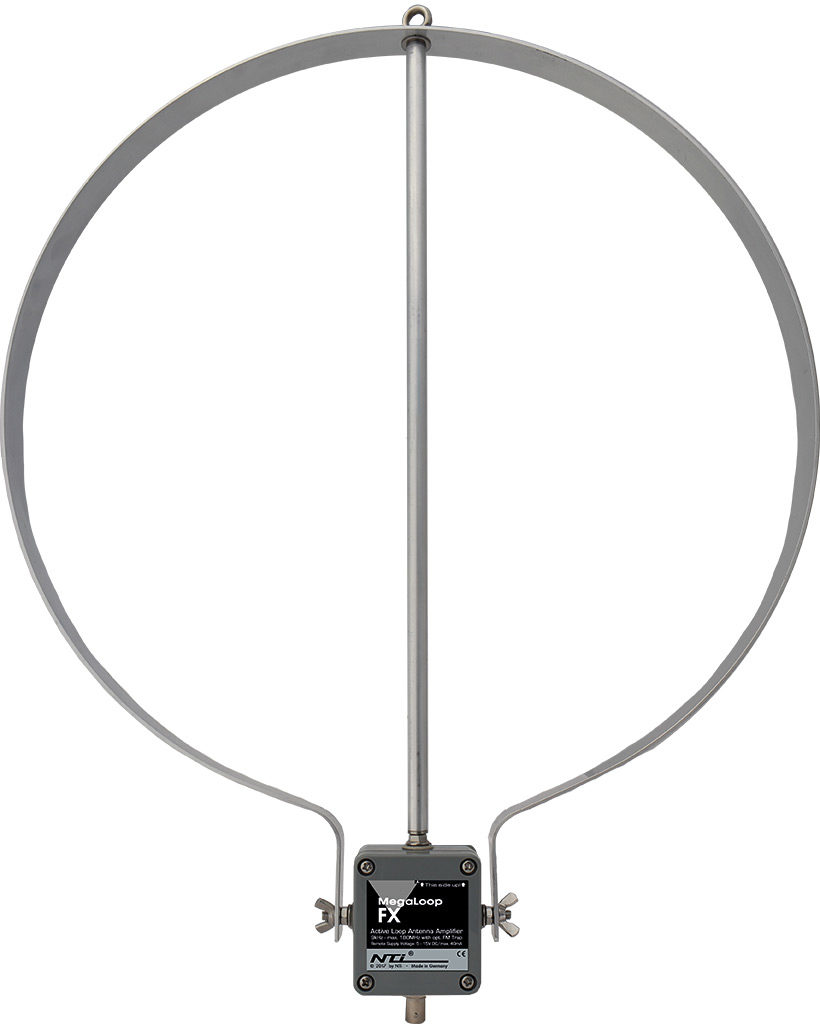
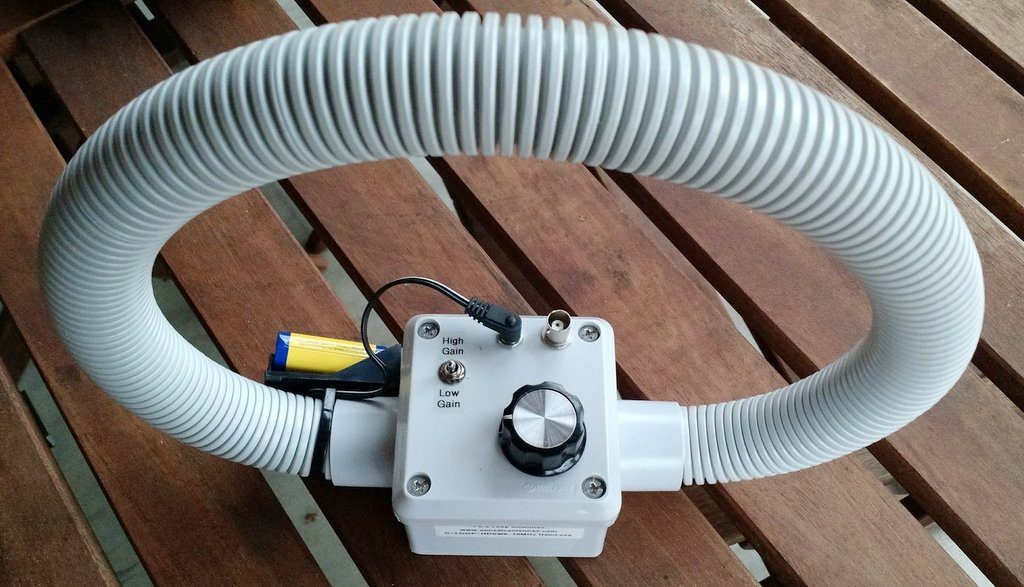
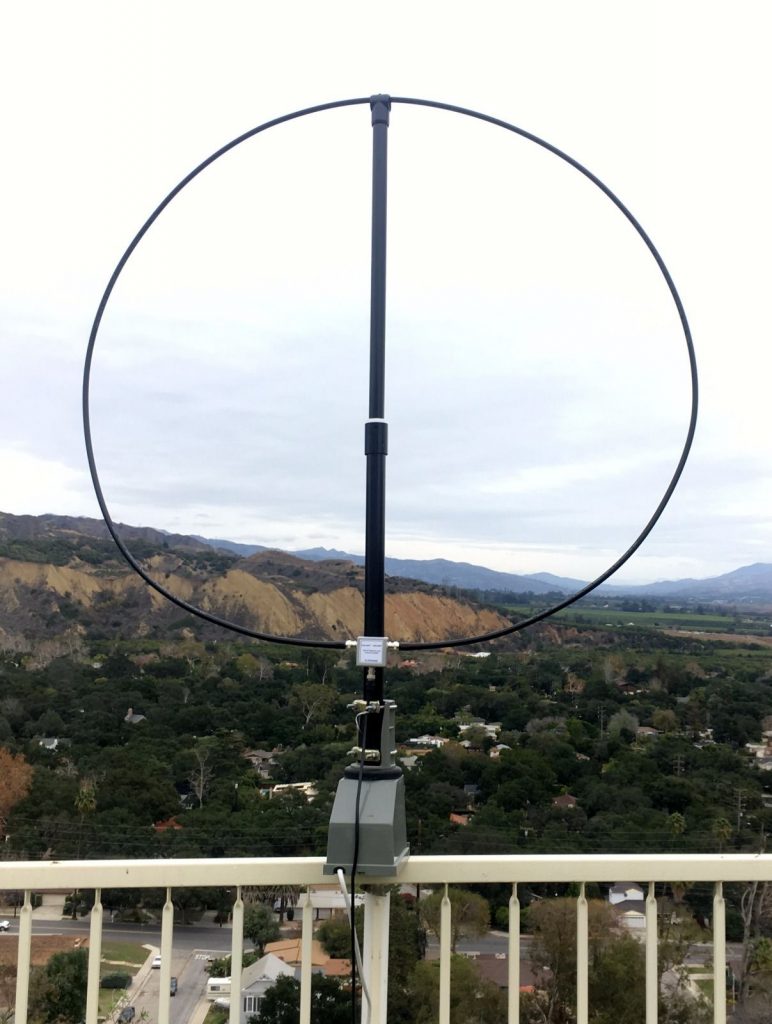
Hi
Add the MLA 30 to the Mix
Almost as good as the big guys at 1/10th the cost
https://www.ebay.ca/sch/i.html?_sacat=0&_nkw=radio+loop+antenna
Package Contents:
the the MLA-30 amplifier with 10M cable
Stainless steel vibrator
Bias supply
USB cable 0.8 m
60cm SMA jumper cable
Stainless steel fixing screws
The MLA-30 loop antenna is a popular broadband antenna. It is an effective antenna for short-w ave listeners (SWL) and amateur radio enthusiasts (HAM) to receive medium-w ave and short-w ave in the limited living area of the city. Frequency coverage: 100kHz to 30 MHz. Excellent directionality can help you reduce noise and improve signal-to-noise ratio, and can dig out weak signals that are overwhelmed by noise when conventional antennas are received.
The MLA-30 loop antenna is easy to install and can be easily installed on balconies, rooftops, and other small, compact, low-profile installations without worrying about neighbors and property opposition.
Another advantage of the MLA-30 loop antenna is that it is directional. By rotating the antenna so that the dummy point of the antenna is aligned with the interfering signal, the specific near-field interference can be minimized.
– No manual adjustment required.
– Rainproof enclosure for long-term fixed outdoor use.
– Stainless steel ring vibrator, easy to install and easy to maintain.
– Local radiation noise suppression up to 30 dB compared to long-haul antennas.
– 8-shaped patterning provides deep dummy points to further reduce interference.
– USB power supply, convenient to take power. Self-contained feeders simplify the installation process.
– Simple structure, easy to install to the balcony, rooftop and other locations.
– Install low-key, no need to worry about neighbors and properties.
– Modular design, easy to install and maintain.
Excellent article! How does any loop compare to a long wire however?
I have an Airspy HF+ with two individual inputs, I want to buy a W6LVP but how would I connect it? Thank You
Not sure why this antenna was not mentioned but please take a look at http://www.carasmfg.com and note both the HF-315 Portable Magnetic Loop and the coupler/tuner which is also available seperately 🙂
Look here for a good low-cost option also:
http://www.carasmfg.com
I recently started working on a hula hoop loop antenna with a 365pf air capacitor. So far it’s performing much better indoors than my 25ft wire is doing outdoors due to the noise of an urban environment drowning everything out.
I think for DIYers the LZ1AQ loop amplifier kit deserves a mention since it has three modes of operation (one loop, crossed loop for lower inductance which can be helpful from the experimentation that he’s done, and short vertical dipole) which gives it some versatility. Plus, the amplifier circuit itself is fairly simple to build yourself you want to try it out before splurging on a the full kit itself.
Yes, the AAA1-C loop amp from LZ1AQ is practically the best opportunity to acquire a diy high-end loop antenna for a decent price. It leaves room for experimentation and for designing both stationary and portable loop systems. It is a VERY GOOD systen.
DL4NO: Second, most RFI is wire bound. So your high-impedance electric antenna (telescopic whip, random wire) easily picks up the RFI capacitively. With the wiring in the walls mostly being high-impedance (open at the power switch), not so many currents can flow. Therefore the magnetic fields carrying RFI are much weaker.
Everything here is not so simple. The wiring, as a rule, is hidden in concrete and directly through the electrical capacitance, its effect on the telescopic pin is not at all stronger than the effect of the magnetic field produced by the current through the same wire on the nearby magnetic loop. Concrete does not weaken the magnetic field. The only really powerful tool against noise is symmetry.
And from that the magnetic antenna or the electric one does not depend so much.
There are several articles on loop antennas at the Loops wiki on the RadioReference website (see the homebrew and technical sections)
http://wiki.radioreference.com/index.php/Loops
I have built the Carpet Loop that’s linked in this article. It works pretty well for what it is, altho when I tested it, I had a huge attic that I could spread a relatively large amount of wire around. And if you’re not careful, you will learn a little about how L networks work.
And here are 2 more that I just learned about recently…
http://www.wb5dyg.com/pdf/WB5DYG_ReceiveLoopAntenna.pdf
http://www.radiohobbyist.org/blog/?p=2340
And I would be remiss if I didn’t mention Joe Carr’s book on the subject – I don’t have it, but those that do tell me it’s a very useful reference…
https://www.universal-radio.com/catalog/books/0016.html
Mike
And a pre-made loop tuner would be another route if you want to “build” by trying different size and types of loops. I’ve not seen a lot of comments on this one:
http://www.mfjenterprises.com/Product.php?productid=MFJ-9232
I cannot vouch for this eBay item, but it looks interesting if you don’t want to build your own tuning box. Just use a larger wire for SW:
https://m.ebay.com/itm/HF-VHF-Loop-Antenna-for-Portable-Radio-Scanner-Receiver-icom-Yaesu-AOR-Kenwood-/152496203358
Perhaps we should mention the basics:
First, some “random wire” antenna needs some counterpoise. Quite easily that will be the power supply and therefore the power grid. This also means that the power grid gets part of the antenna. You can escape this situation only by battery operation or a symmetric antenna like a dipole.
Second, most RFI is wire bound. So your high-impedance electric antenna (telescopic whip, random wire) easily picks up the RFI capacitively. With the wiring in the walls mostly being high-impedance (open at the power switch), not so many currents can flow. Therefore the magnetic fields carrying RFI are much weaker.
If you use a magnetic antenna, you get a more or less symmetric antenna that does not pick up much of the electrostatic fields. This eliminates many of the RFI sources you suffered before.
For your first tests you find a good idea above: Get one of these tiny variable capacitors that were used in miniature AM radios of former times and connect it to a loop made of several meters of wire. There have been published many possibilities to couple this loop to your radio.
The most basic method, usable for AM reception: Put your radio near the loop and try to find a peak with the variable capacitor from above. This works, because nearly all radios use a magnetic (ferrite) antenna for AM reception. The loop simply collects energy from a much larger area.
Greetings from Germany,
Alexander
An excellent summary of the real main advantages of low-impedance loops, Alexander – balanced, so not reliant on an earth (and getting a good, noise free _RF_ earth is difficult!) or counterpoise (similar problems); reduced coupling (so minimal pickup of much locally-generated & mains-borne RFI); & reduced sensitivity to (predominantly E-field) local radiated noise.
The deep nulls, often cited as the main benefit of electrically short loops, are in reality usually only a secondary factor in their usefulness.
To work with SDR, a broadband loop antenna will be more useful. But such antennas make very high demands on the amplifiers with which they work.
http://lz1aq.signacor.com/docs/wsml/wideband-active-sm-loop-antenna.htm
Victor, thanks for sharing that article. His findings are important and helped me follow basic rules to make my small, “fat” backpack broadband loop without needing all the crazy math. To quote him:
“The main rules are:
1. Only single turn loops must be used.
3. The loop loss resistance is not important so the material can be aluminum instead of copper.
2. A circular form of the loop – the ratio L / Area should be minmized.
2. A “fat” conductor loop with low inductance or parallel loops should be constructed to reduce the inductance.
5. Parallel crossed loops are promising. With this technique loops with much bigger area, low inductance and high upper frequency can be constructed. At the same time they exhibit the radiation pattern of a very small loop. In this way the wideband loop noise floor can be reduced to acceptable level for the shortwave frequencies.”
I also added ferrite bars to make it a true Ferrite Sleeve Loop which he does not delve into.
I have to comment on those “rules” as a ham:
“1. Only single turn loops must be used.” This is almost exclusively for transmit loops due to parasitics. The PK loops and every ferrite loopstick I’ve ever seen violate this rule.
“3. The loop loss resistance is not important so the material can be aluminum instead of copper.” Boy is this wrong! Loops are magnetic and that means current–Amperage! In turn, that means SKIN EFFECT. Like #1 above, this is a much bigger deal with TX loops but you’ll notice the better loops will be wound with Litz wire for this reason. Also remember lower resistance equals higher Q and selectivity, and usually sensitivity for mag loops.
“2. A “fat” conductor loop with low inductance or parallel loops should be constructed to reduce the inductance.” I’m sorry but this doesn’t make any sense to me. Parallel loops have parasitic inductance and especially capacitance that can really screw things up especially on higher frequencies. As for inductance, the whole point of the loop is inductance, which in turn governs how low a frequency you can tune to (esp with a given tuning capacitor range). For a HUGE example, look up the 160 meter transmit loop on YouTube. Again, for RX use, loopsticks violate both by having lots of turns closely spaced and the ferrite dramatically increases inductance!
I can’t really comment on the other 2 entries (“Parallel Crossed Loops” and the L / Area thing).
I should point out, if it isn’t obvious to anyone here, that the non-tuned wide-band loops (W6LVP, Pixel / DXE, WellBrook, etc) behave in a very different fashion to the tuned high-Q loops like the various transmit loops and the PK. One major way I can think of is that the former loops REQUIRE an amp because they are not tuned in any way; the best they can do is some kind of broadband transformer. Meanwhile the high-Q loops behave electrically like a parallel-tuned tank circuit you’d find in any radio: once tuned to a frequency, resonance is achieved which produces a large voltage in the cap & current in the loop (inductor), thus passive operation is possible along with knocking out interfering stations (or noise).
Hope this helps!
All these loops are good when there is some clearly localized noise source.
If the noise is distributed in different directions – the loops help badly. It is useful only that the loop is connected to the receiver via a cable, which allows you to find a quieter place to install the antenna. And also the fact that it is symmetrical and does not require a ground or a counterweight, which excludes one of the ways of noise penetration into the receiver. After reading enthusiastic texts about the usefulness of loop antennas, many times engaged in experiments, but was never satisfied with the result. Reducing interference is negligible, and problems with constant regulation are great. In the case of using a resonant loop with SDR radio, half of the useful capabilities of SDRs will remain unrealized altogether.
You omitted the MFJ Receive Loop….it outperforms my Wellbrook ALS-1530+. Very competitive prude point! See http://www.mfjenterprises.com/Product.php?productid=MFJ-1886.
Frank, thank you. That is an omission indeed–I keep forgetting MFJ has an RX loop. I’ll add it to the post hopefully tomorrow.
73,
Thomas
Yeah but it’s Mighty Fine Junk! Buyer Beware and make sure to have your soldering iron & maybe a collection of hardware (bolts, screws, nuts, etc) nearby!
Actually, have you seen their loop antenna? It’s solid and built really well. I’ve a friend who has one and is very impressed with it even though he also owns a Wellbrook.
I’ve often heard MFJ referred to in this way and I’ll admit it had an impact on me early in my ham radio days when I didn’t know the company–I avoided them based on that “Mighty Fine Junk” interpretation.
But my first proper HF ham radio station needed a manual antenna tuner and I couldn’t afford something like a Palstar then. I bought one of MFJ’s tuners with a roller inductor–I think it set me back $180 or so.
I used it for *years* at multiple sites and it worked flawlessly.
After about 4 or 5 years, something inside malfunctioned–I think it had to do with the connection to the roller. I called MFJ and they asked me to send it to them. I did with an RMA number and a couple weeks later I got the tuner back fixed by the factory at no cost to me other than $10 to ship it.
MFJ does something that few other US manufacturers can do. They still keep the majority of their manufacturing in Mississippi and they have a solid warranty. You can even reach a human being in customer service and they repair or replace their own gear. They do this while keeping their prices *very* competitive.
Their gear may not be as refined as other manufacturers, but it works and must be the most widely used here in the States. You’re hard-pressed to find a ham who hasn’t purchased from MFJ.
Their founder and president, Martin Jue, is a top-shelf fellow, too. I’ve met him a number of times. He’s an inspiring guy with an amazing story. His employees love him, too, because he’s fully invested in his company, his community and his hobby. His company has virtually no churn at all–most of his employees have been with MFJ their entire career.
Great question Chris! Noise is a cruel thing and it depends how bad yours is. A loop is good but an amplified loop might just amplify the indoor noise. I think you will be surprised how much difference there is getting outside. Even a thin magnet wire strung outside (wrapped around a couple of tall planters spaced far apart) can be very useful.
I am currently experimenting with a homemade broadband loop (expensive) with an RSP-2 and small Dell netbook carried in a backpack. I have successfully left it running inside my car at work to record Voice of Greece among other things (on top of a three story car parking deck). Other than the netbook shutting itself off in very cold temperatures and the car degrading some of the signal pick up, it is very usable for clear reception of stronger signals.
I have also carried the backpack and netbook outside at a large Forest Preserve (county park with no noise) while walking around with it. So, I would not limit the RSP-1A you have in mind to be only for home use.
Suggestion would be to start small and cheap. Get from eBay an AN-100 or AN-200 for mediumwave use first and see how you like using the RSP-1A (it gives you a good idea of the direction and strength of noise you are dealing with). Then get a loop that can handle shortwave that can be used indoors or outdoors (battery powered). One thing to lookout for is to see if the powered loop can still be used without the power turned on since the SDRPlay radios have a built-in Low-Noise Amplifier (LNA). You don’t always need an amplifier but many cheap designs block all signals if the power is OFF!
Good luck!
“You could build a passive loop antenna for less than ten dollars if you can find a good variable capacitor.”
Remember, it’s a receive loop – a (relatively) expensive air-spaced variable capacitor isn’t necessary to start with; a cheap plastic tuning cap out of an old transistor radio will work just fine…
For the purists: (a) a lot of guff on the internet about the ‘right’ sort of capacitor that you ‘must’ use in your loop antenna is ‘received wisdom’ owing more to what I call “Joneses ignorance” (‘gotta have the best’ whether it’s appropriate or not) than fact, and (b) many designs use varicaps which are inherently relatively leaky, lossy, low-Q devices anyway – and nobody complains about them…
Wow, this article is really timely – Lately I’ve been really exploring magnetic loops as a solution for a good indoor antenna. I live in an HOA with covenant restrictions on antennas. In addition I’m in a one-story house on a fairly small lot so the outdoor antenna options are very limited. I’ve looked at building a loop or buying one. If I go the purchase route the new MFJ-1886 seems to hold a lot of promise for the price as a receiving only antenna. http://www.mfjenterprises.com/Product.php?productid=MFJ-1886
But, I’m not sure I want to drop $250 so I may further explore the build route with the links you provided.